The New Canyon Strive Isn’t an Enduro Bike and That’s Okay
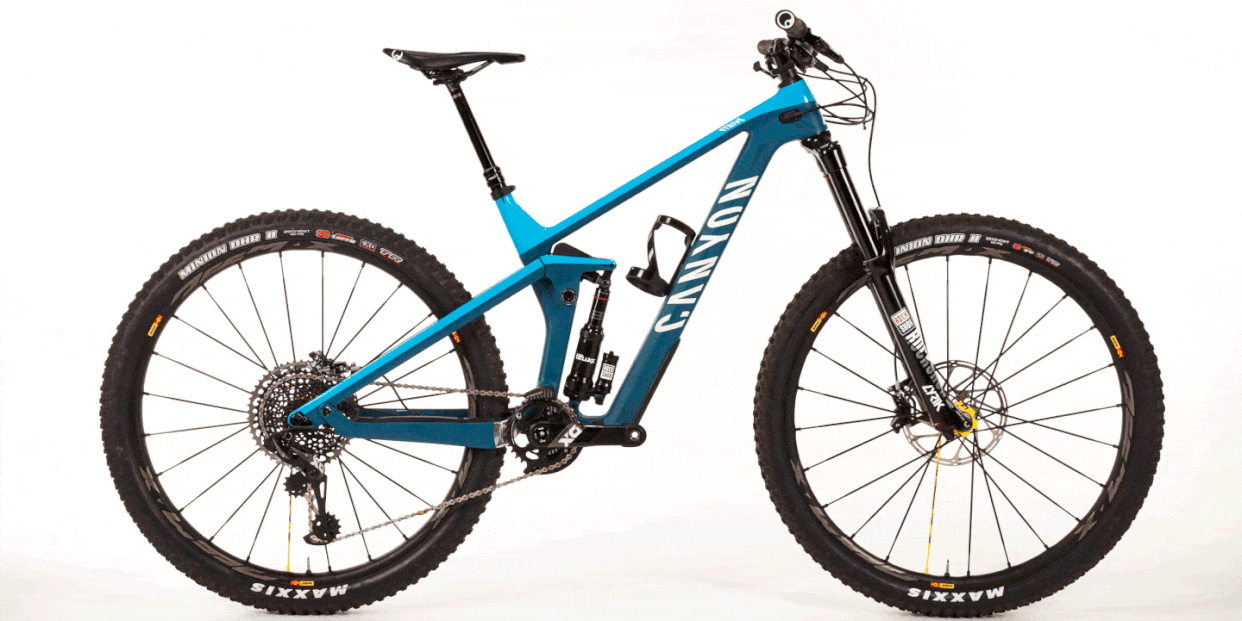
The Takeaway: this 29er has lots of travel —150mm rear and 170mm front—and an enduro build, but it rides like a shorter travel and lighter trail bike.
CFR-level frame is 300g lighter and just as stiff as CF-level frame
Shapeshifter adjusts geometry and suspension with one push of the handlebar remote
Comparatively slack seat tube angle
The Canyon Strive CFR 9.0 Team is not what it seems. The impression offered by its Mavic DeeMax wheels, 200mm disc rotors, 170mm travel fork, and almost 1200mm wheelbase (size medium) is that it will be a beast of a bike: A plow that needs steeps and speeds to come alive.
But it’s not a plow—not at all. It rides like a shorter travel bike. Its overall demeanor is more like a trail bike than what I expect from an enduro (race) bike right now.
Of course, what I think a 29er enduro (race) bike should feel like is forever altered because of the new Specialized Enduro, and a few other bikes. As mountain bike geometry continues to get longer and slacker in all categories, what was big and long and slack 12 months ago isn’t anymore.
—Five Cool Features—
So in spite of the Strive Team’s travel (150mm at the rear and 170mm up front), its parts—like the RockShox Lyrik fork and SRAM Code brakes—and the geometry put down paper, this Strive rides light, it is lively and crisp at trail speeds, it climbs well, and behaves well on slow and technical climbs. It felt like it had more in common with Trek’s Fuel EX trail bike than the current paradigm of a 29er enduro-race bike.
Which is totally okay. There should be diversity and different interpretations of an enduro bike, a trail bike, an XC bike… all bikes. If every enduro bike were like every other enduro bike, we’d all be riding the same enduro bike—who wants that?
The Strive 29 Team—the only model to get a 170mm fork, other Strive models get 160mm forks—is certainly a bike that can rip a descent. The rear suspension—wrangled by a Rockshox Super Deluxe RCT shock— is well-tuned through its travel range: it is sensitive, there’s an effective mid-stroke platform, and it uses all its travel without harsh bottoming. The Lyrik on the front steers accurately and offers very good control. A small complaint though: for whatever reason, the Rockshox fork and shock on this bike felt a little off and did not have the silky reactivity I’m used to feeling in the company’s current products. As a result, the Strive’s suspension worked effectively, but did not wow me.
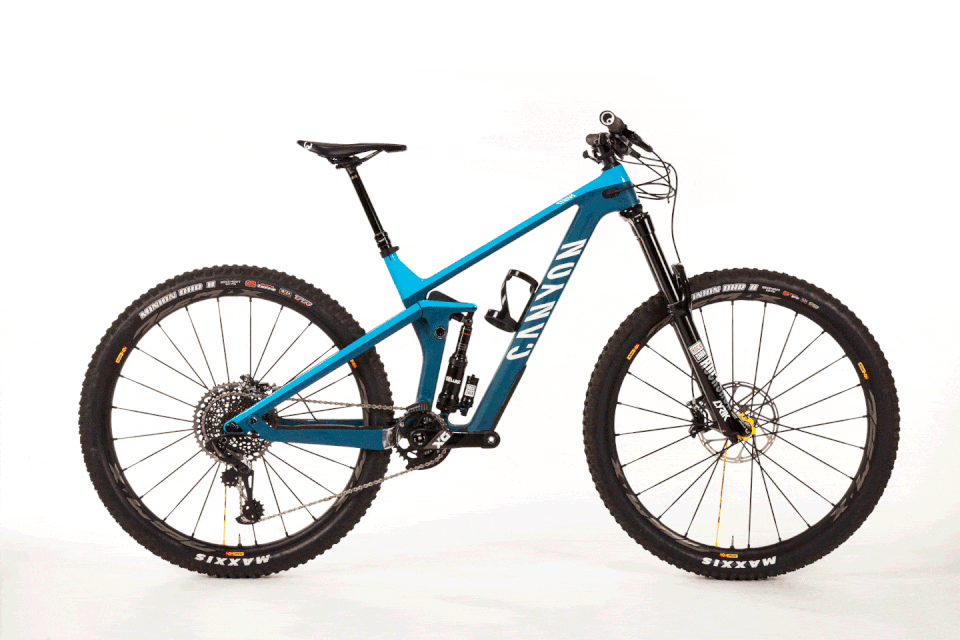
The Strive sits relatively low—its 32mm of BB drop is enough to offer an in-the-frame feel. On the size medium, reach is somewhat short, 435mm, but the top tube is a whopping 629mm. No surprise then that the seat angle is a slack—73.5 degrees in the DH position, and 75 in XC. Considering few people blink at seeing a 78-degree seat angle on a mountain bike right now, the Strive seems laid back.
On the trail, it didn’t feel that laid back to me—the 165mm cranks may be part of the reason. However—and full disclosure—as seat angles have become steeper and steeper, I find myself pushing my saddle further back to maintain my preferred position relative to the bottom bracket. So the Strive felt fine to me, and that long top tube let me stretch out comfortably when I was climbing in a seated position. But when out of the saddle and standing, the Strive did feel a touch short. The seat angle is so tied to a rider’s preferred position I can’t say if any angle is wrong or right. But if your position requires a steep seat angle, the Strive doesn’t have it.
The handling is, well, it depends on what you want to do with this bike. If you wish to do shuttle runs, bike parks, or you are a hard-charging enduro racer, you’ll be disappointed unless you prefer a quicker-handling bike. This Strive—despite being accompanied by a heavy dose of Enduro World Series imagery—handles like a middle-of-the-road trail bike—it’s neutral, and does okay at both walking speed climbs and eye-watering descents, but is at its best at middle-fast singletrack speeds. I’d compare it more to bikes like the Fuel EX mentioned above, or the Evil Offering, or even the new Santa Cruz Tallboy. It has a sharpness and quickness to its steering that monster bikes like the Enduro don’t have.
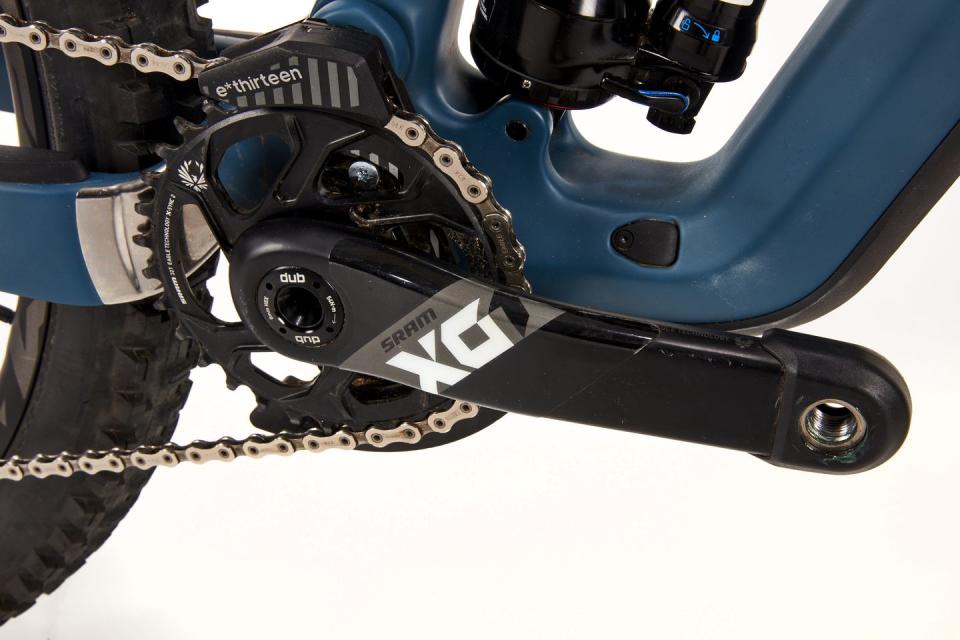
At least some of the Strive 29’s liveliness comes from the somewhat-steep 65.5-degree head angle. Yes, I called 65.5 degrees somewhat steep, because for a bike pitched as an enduro race bike in 2019, it is.
120/130 bikes like the Santa Cruz Tallboy, Marin Rift Zone, and the GT Sensor have 65.5-degree head angles. On the slack end of the enduro-race spectrum are bikes like the Specialized Enduro (63.9), Norco Sight (64), Yeti SB150 (64.5), and a few others. One number can’t tell you everything about a bike, but the Strive’s head angle does telegraph that it might not be as extreme as the most progressive frames in the enduro-race category.
Even though this bike is surprisingly lively and light on its tires for a 150/170mm 29er, it can be even more so because of Canyon’s Shapeshifter. Actuated with a remote under the left grip, the Shapeshifter uses a pressurized air spring (it looks like a tiny shock) to change the position of the upper shock eyelet, altering the Strive’s shock rate and geometry. In XC mode, Rear travel effectively drops to 135mm; sag reduces three-percent and anti-squat increases. Meanwhile, the bike’s head and seat angles steepen by 1.5 degrees, and the bottom bracket lifts.
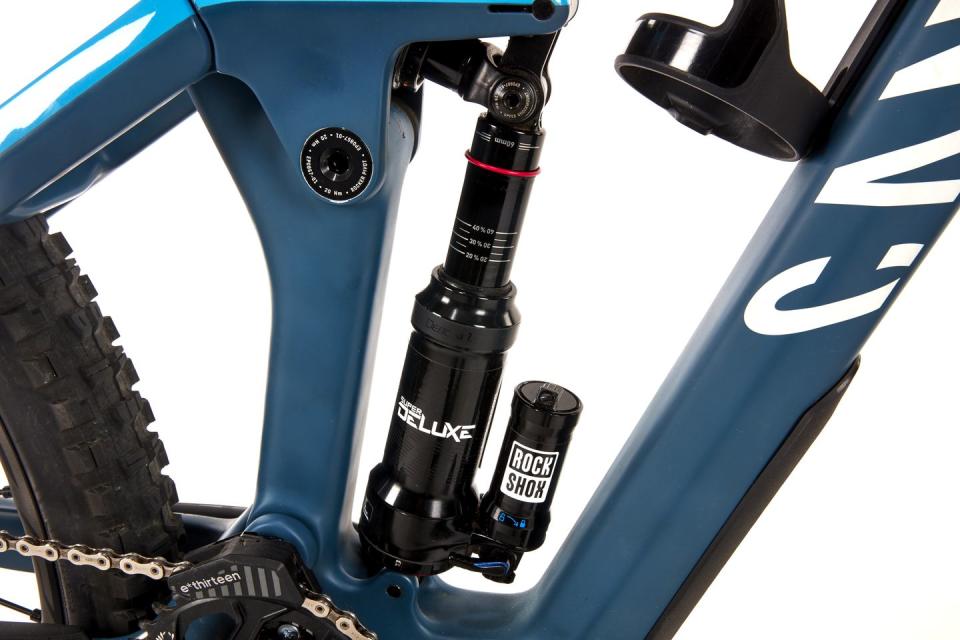
This improves the Strive’s manners when the climbs are slow, steep, and technical. The steering is sharper and self-centers more aggressively, and it doesn’t wallow into its rear travel so you can keep your momentum up and push off a decent shock platform when you’re working a tricky section. Cranks are just 165mm on all sizes: These and the lifted bottom bracket offer excellent ground clearance so that you can keep on the gas in chunky terrain.
However, I found myself using the Shapeshifter less as I got more hours on the Strive. Switching between Shapeshifter modes is clunky. To change from DH to XC mode, all weight must be pulled off the rear wheel, which means throwing down some sexy hip thrusts or nose wheelies—not always the easiest thing to do on singletrack, especially if you’re already on the climb. Going from XC to DH is easier, but the rear end still needs a pretty aggressive rear-suspension squish to flip it into downhill mode entirely.
After a while, I mostly left the Strive in DH mode and used the shock’s climb switch if I wanted the bike to pedal more crisply—it was faster and easier than using the Shapeshifter—saving the mode-switch dance for only the most extended steep or technical climbs. There, the steeper seat angle, 75 degrees, was also welcome.
I wasn’t stoked on the Shapeshifter’s remote either because it jacked with my preferred dropper-remote positioning. I use the dropper a lot when I ride—more than a shifter—and my left thumb lives on the remote paddle. The Shapeshifter remote attaches under the left grip where a dropper remote would normally reside—the dropper remote is then connected to the Shapeshifter remote, below the geometry-switch paddles.
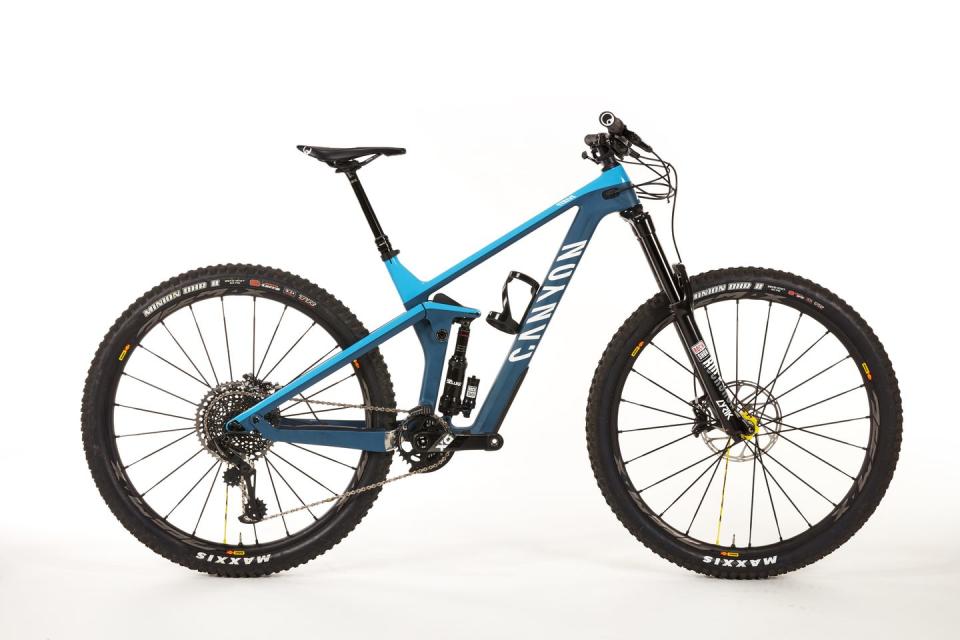
This made the dropper remote a long reach, and not as easy to hit while navigating terrain that demanded my total focus. I eventually got (kind of) used to the dropper remote’s new position, but it never felt right. I think riders will use the dropper remote more than the Shapeshifter remote, so the dropper remote’s position should be prioritized over the Shapeshifter’s. Canyon did the opposite.
Though I didn’t love it, the Shapeshifter mostly works as advertised, and it is a feature you won’t find on any other bike—which is worth a lot. But if this were my Strive, I’d be looking at locking it into DH mode and getting rid of this remote. Bikeyoke makes an accessory for the previous generation (2015 to 2017) Strive’s Shapeshifter called Modefixxer DH. The Modefixxer DH replaces the remote and the Shapeshifter’s air spring mechanism with a simple aluminum link that locks the bike in DH geometry (there is also a two-position Modefixxer Pro). I love to see Bikeyoke make a Modefixxer for the current Strive too.
Canyon offers the Strive 29 frame in two versions: the CF and CFR. Stiffness is about the same either way—I’d rate the Strive’s stiffness as about a seven out of 10 based on my review bike—but the CFR frame is 300 grams lighter than the CF. CF models start at about four-grand, with the top of the line bike, reviewed here, coming in at $6,000. All frames have carbon front and rear triangles, Shapeshifter, threaded bottom brackets, ISCG ’05 tabs, internal routing (with anti-rattle measures), integrated armor, and room for a bottle in the main triangle. The rear suspension design is a dual-link in the Specialized FSR style (long lower link, short upper link).
By the standards of the moment, the Canyon Strive CFR 9.0 Team is not an enduro race bike. Instead, it’s something more exciting and ultimately more useful and broadly appealing: a crisp and lively trail bike with extra travel.
You Might Also Like

